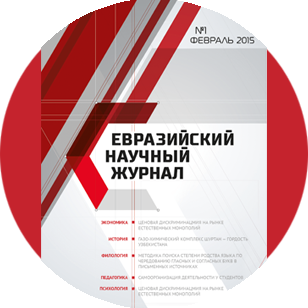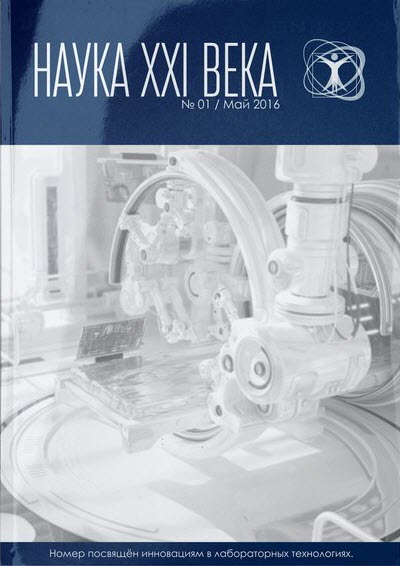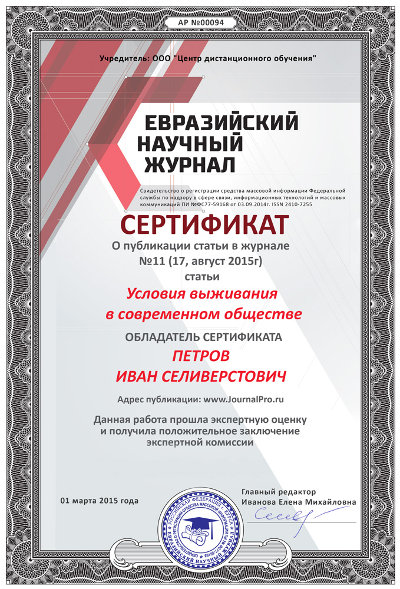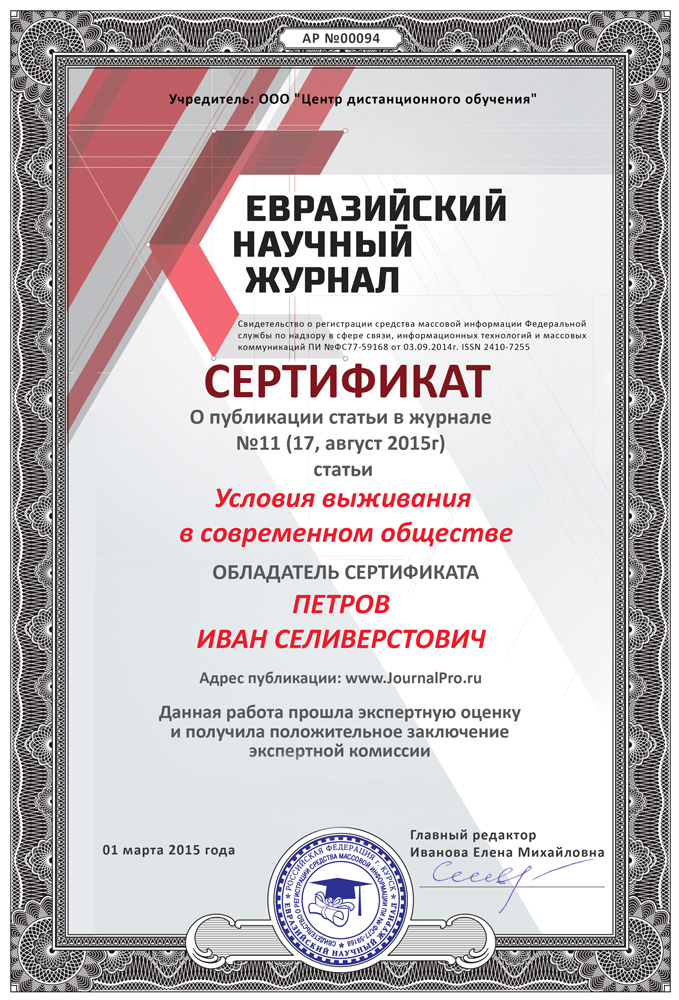Срочная публикация научной статьи
+7 995 770 98 40
+7 995 202 54 42
info@journalpro.ru
"THE MAN WHO LAUGHS", AN ARTISTIC ANALYSIS OF THE NOVEL BY VICTOR HUGO
Рубрика: Филологические науки
Журнал: «Евразийский Научный Журнал №6 2021» (июнь, 2021)
Количество просмотров статьи: 2228
Показать PDF версию "THE MAN WHO LAUGHS", AN ARTISTIC ANALYSIS OF THE NOVEL BY VICTOR HUGO
Oripov Shavkat
Master’s degree student
of Samarkand State Institute of Foreign Languages, Uzbekistan
Abstract: This article describes the analysis of one of the most famous novels of the 19th century, the work of V.Hugo “The Man Who Laughs.” The article describes in detail the meaning of the novel, as well as the characteristics and images of the heroes.
Keywords: novel, V.Hugo, eternal laughter, history of life, human and social issues
One of the most famous novels by Victor Hugo was created in the 1860s and published in April 1869. In it, the French writer raised several important universal and social issues related to the eternal themes of life and death, spiritual love and bodily passion, truth and lies, an insurmountable chasm that exists between the poor, suffering people and the nobility endowed with wealth and power.
The place of action of the novel is England (Portland, the village of Waymet, the town of Melcombe Regis, other small rural cities of the country, London). Time of action — the end of the 17th — the beginning of the 18th century. The chronotope of the novel is determined by the wandering nature of the protagonists — buffoons, giving performances first in a tiny carriage, and then in a huge theater on wheels called the Green Box. The main part of the work takes place in two space-time planes: in the area of the Portland plateau, on the banks of which a ten-year-old ugly boy was left on January 29, 1690, and in London, in the winter-spring of 1705, when twenty-five-year-old Gwynplaine learns the secret of his birth, eternal laughter and meaning life.
All the characters in the novel, both the main ones (the philosopher Ursus who raised Gwynplaine, the blind girl Dey, the half-brother of the “man who laughs” — Lord David Derry-Moir, Duchess Josiana, the former lackey of Jacob II, the ocean bottle opener Barquilfedro), and the minor ones (comprachios from the lessons of Matutin, the people watching the performances of the artists from the Green Box, nobility and employees of the House of Lords) are connected with each other through the image of the central character — Gwynplaine / Lord Fermen Clencharly, a peer of England.
“The Man Who Laughs”, by his own admission to the English lords, is a terrifying symbol of violence, every second committed by the nobility over the rest of humanity. “I am the people ... I am the reality ... I am the Man. Scary “The Man Who Laughs” — says Gwynplaine about himself. “Laughing at whom? Over you. Above oneself. Above everything”.
Gwynplaine’s eternal laughter is of a physical nature. The constant irony of Ursus stems from his internal moral attitudes: familiar with numerous philosophical treatises and the realities of the life around him, the hero only does what he grumbles at the world. He “praises” the lords, whose descriptions of the riches of which his cart is filled, and “scolds” the poor children who decided to deprive him of dinner, the children whom he will accept not for one cold winter evening, but for life, becoming their father, teacher and friend until death itself.
Gwynplaine’s life story is tragic from start to finish. As the legitimate son of his father, Lord Linnaeus Clancharly, after the death of his parents, he, by order of King James II, is stripped of his title and placed in the hands of the Comprachicos — a community of vagabonds involved in the sale of children previously mutilated for fairground performances. After the ascension to the throne of William III, who began the persecution of child traffickers, the boy is abandoned in the harbor of Portland.
According to all the laws of the realistic genre, in which, according to many literary critics, the novel “The Man Who Laughs” was written, the child should have died. But here the higher (romantic) providence intervenes, under which Hugo deduces nature (and in fact — God), and the boy not only survives, but also saves a nine-month-old girl from death. On the way to life, the child is accompanied by continuous dangers — cold (the action takes place in one of the coldest European winters), fear (meeting with the corpse of a smuggler), death (crossing the thin Portland Isthmus and the constant threat of being either in the sea or in the ocean), hunger, fatigue, human indifference. Gwynplaine overcomes everything, acquiring in the end — a house (not too big, but warm and cozy), a family (someone else’s by blood, but kindred in spirit), fame (at a fair level), money (enough so as not to starve yourself and feed Deyu and Ursus with Homo), love.
The theme of love in the novel is revealed in two aspects: romantic — the love of Gwynplaine and Dei (pure, sublime, spiritual) and realistic — the physical attraction that exists between Gwynplaine and Josiana (passionate, bodily, animal). The image of Josiana is contrasted with the image of Dea: unlike a blind girl, beautiful, fragile, light, the duchess looks majestic in her beauty, a desirable woman, full of bodily health. She is drawn to Gwynplaine by an inner perversity that coexists with physical innocence in Josiana. The girl dreams of giving her virginity to the lowest person in the world, thereby rising above the high society despised by her and putting an end to satiety and boredom.
The same supreme providence protects Gwynplaine from moral fall, which for fifteen years carried a bottle with the confession of the Comprachicos sealed in it. The exaltation of the hero becomes a turning point and final stage in his life. Having become a lord, Gwynplaine in one day faces all possible temptations — pride, vanity, lust, oblivion (past life), betrayal of his loved ones (fleeting, but no less acute). Having received the opportunity to convey to those in power the truth about the suffering people, he cannot fully realize his status of a peerage because of the physical deformity that makes others laugh, and some tongue-tied language due to the lack of speech practice of communicating with the upper strata of society.
After the debates in the House of Lords, only his half-brother, David, who knows the folk environment in which he turns under the guise of the sailor Tom-Jim-Jack, takes the side of Gwynplaine. At the same time, supporting the ideas put forward by the buffoon, in an impulse to defend his good name and the name of his family, he challenges not only the young lords, but also his newly acquired brother to a duel.
Struck by the baseness of high society, Gwynplaine (in the literal sense of the word) runs down and, not finding the “Green Box” in its former place, immediately realizes that he has lost. His real name and life turned out to be a lie; his ugly smile and buffoonery are true. As Ursus predicted, the true happiness for Gwynplaine has always been Dey alone, seeing his kind heart and loving him for himself. The death of Gwynplaine and Dei puts an end to their relationship — not having bodily development on earth, but endlessly striving into the divine cosmos.
THE LIST OF USED LITERATURE:
1. Леонтьева Т. В . , Щетинина А . В . , Еремина М . А . Галерея лингвистических портретов социальных типажей: монография. Екатеринбург: Ажур, 2018. 336 с. 7. Маклакова Е . А. О метаязыковом описании значения слова в лингвистике // Язык и национальное сознание . Вып. 23. / ред. И . А. Стернин. Воронеж: Истоки, 2017. С.
2. Падучева Е . В. Динамические модели в семантике лексики. М . : Языки славянской культуры, 2004. 609 с.
3. Галеев Т. И . , Мифтахова А. Н . Эволюция явлений социальной семиотики в разных типах дискурса (на примере анализа лингв окультурного типажа “Русский дворянин”) // Филология и культура. 2016 . № 1 (43). С.
4. Го Лицзюнь. Лексическая репрезентация образа Китая в российском публицистическом дискурсе // Научный диалог. 2019 . № 3. С.









